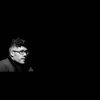A track I wrote with Max Cooper called Fragments of Self has just been used on the latest Vodafone advert, The Call, about the emergency services. We refer to this as a 'sync'- namely the granting of a licence to sync-hronise a certain piece of music to a certain picture. And in the well-documented troubles of the recorded music industry, sync is a shining beacon for almost every record label, publisher, composer and artist.
It is emotional advert about a fireman putting out a blazing car, for which the simple piano intro of our piece provides the soundtrack. Now I am biased I know, but there is something magical and timeless about the piano. And I like to think that the solo piano piece I wrote for a Cesar advert recently, played a part in propelling the commercial to the No.1 spot in the Most emotional ever to be shown on UK television chart.
You may have seen the heartbreaking sixty-second story: an old man takes his lovely little fluffy white dog for a walk to deliver a bunch of flowers. It transpires he is delivering the flowers to the graveside of lost loved one. The dog comforts him with a lick and they eat dinner together, with the man preparing the dog's favourite meal, Cesar.
Many a tear has now been shed over dog food. The response has been overwhelming- almost one million views on YouTube, and many downloads of the piece both as audio and as sheet music for people to play on their pianos at home.
It is especially pleasing to have found sync homes for two brand new pieces of composition, as I believe this actually bucks a general trend in music and advertising. I asked two industry insiders to explain:
"There is no hard and fast rule to sync, although one current trend in advertising is back catalogue songs and covers. John Lewis has been at the forefront of this trend, and many other clients aim for that 'John Lewis' moment themselves - namely the marriage of a well known song covered by a contemporary artist (with the hope that the track goes to the top of the UK singles chart)" James Cooper, head of Sync & Creative Licensing, Sony
Indeed many people have commented that the Cesar advert and its musical accompaniment 'feel' a little like a John Lewis advert, despite the fact that The Walk Through The Village, my piano piece for Cesar, is an original composition written especially for the film.
"Every so often a perfect storm occurs with a brand and music. There is no magic formula but it is a particular combination of timing, media spend, great creative, the right track, and a brave, risk-taking brand. When this happens the power to cut through into popular culture increases exponentially. Adverts and tracks that might have only had a modicum of success can be propelled into award winners and number one hits. Campaigns such as Sony Balls with Jose Gonzalez' cover of The Knife and John Lewis Bear and The Hare with Lily Allen's cover of Keane, all exemplify this phenomenon." Dominic Bastyra, director of Music Europe, Platinum Rye
I have done a number of reworks in my time. My most high profile (and personal favourite) cover is without doubt Daft Punk's classic, Aerodynamic. It was used in a Pantene commercial starring Myleene Klass, and so impressed were Daft Punk (the music supervisor assures me) by this new orchestral interpretation, my version remains the only occasion that the band have authorised a cover of their music to be used in a commercial.
Of course Daft Punk can afford to be pickier than most when it comes to licensing their music, whereas most artists and their publishers and labels jump at the chance for a sync.
"For the artist, a sync can work in many ways. If the film is effective and the track is properly showcased, it has the ability to propel the act far beyond their traditional routes to market. On the other hand, the track can be a minor element within the spot, hidden under voice over or only featuring briefly, and in this instance it would simply be an additional revenue source. But very rarely now do artists completely turn their noses up at sync, as a kind of "selling out" - the market just doesn't work like this anymore" Dominic Bastyra
If the artist is lucky, their music gets synchronised to a beautiful cinematic sixty-second mini-feature, but really this is just a bonus. Either way there is a bottom line that is helping to get the music industry wheels turning once more:
"The big money tends to be in commercials" James Cooper
This leaves us with only one final thorny issue. It is consuming the industry and it is a question of spelling: to sync or to synch? You will now have gathered I am on the no 'h' side of the fence, but if you feel strongly you can have your say in this Music Week poll.
